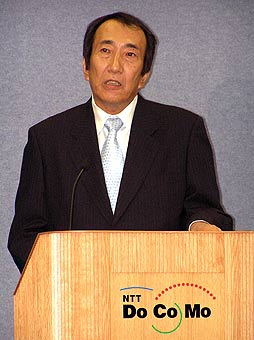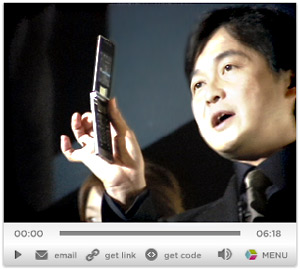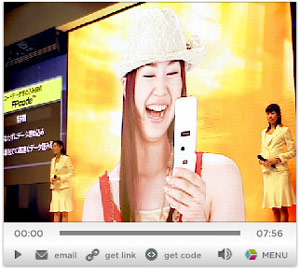 Despite the resounding silence from DoCoMo’s website, Tower Records (part-owned by DoCoMo) have just introduced a joint-venture service with Napster in Japan. The Tower Records Japan-Napster JV will provide music distribution services for PC and mobile from an initial catalogue of 1.5 million songs. The initial service launch only allows content purchased by premium subscribers – a subscription costs 1,980 JPY per month – to be moved from the PC to mobile devices – and at this time only one handset (F902is) is supported.
Despite the resounding silence from DoCoMo’s website, Tower Records (part-owned by DoCoMo) have just introduced a joint-venture service with Napster in Japan. The Tower Records Japan-Napster JV will provide music distribution services for PC and mobile from an initial catalogue of 1.5 million songs. The initial service launch only allows content purchased by premium subscribers – a subscription costs 1,980 JPY per month – to be moved from the PC to mobile devices – and at this time only one handset (F902is) is supported.
DoCoMo took a 42 percent share of Tower Records here in November 2005 and – if the on-scene hype at DoCoMo’s booth at this week’s CEATEC consumer electronics show is any guide – they appear ready to announce a more aggressive mobile music device line-up in the coming weeks.
The Tower Records initiative appears not unrelated to DoCoMo’s overall mobile music strategy, which has so far run a distant second to mobile market leader KDDI/au.
Since 2002, KDDI have seen strong traffic, sales and handset popularity with their Chaku Uta, Chaku Uta Full, and Chaku Motion full-track audio and video offering. More recently, their new ‘LISMO’ unified PC/mobile content download and syncing service has started to gain customers, while DoCoMo have only this year in June started pushing Chaku Uta Full.


 NTT DoCoMo, Inc. and its eight regional subsidiaries today announced 14 new 3G FOMA handsets, including the 903i-series, the ‘SIMPURE’ series and N902iL. All 11 new 903i handsets provide a wide range of entertainment functions, said the company. They are equipped for DoCoMo’s Chaku-Uta Full full-track music-downloading service. Five models can play tracks transferred from PCs that were used to download music from sites such as Napster Japan, which offers unlimited access to approximately 1.5 million downloadable tracks for a flat rate. HSDPA-capable models work with the Music Channel service, which enables up to two music programs to be downloaded automatically during the night, and the expanded i-motion video clip for downloading up to 10MB files. All models are compatible with Mega i-appli rich applications, and some are also equipped for “One-segment” digital terrestrial broadcasting.
NTT DoCoMo, Inc. and its eight regional subsidiaries today announced 14 new 3G FOMA handsets, including the 903i-series, the ‘SIMPURE’ series and N902iL. All 11 new 903i handsets provide a wide range of entertainment functions, said the company. They are equipped for DoCoMo’s Chaku-Uta Full full-track music-downloading service. Five models can play tracks transferred from PCs that were used to download music from sites such as Napster Japan, which offers unlimited access to approximately 1.5 million downloadable tracks for a flat rate. HSDPA-capable models work with the Music Channel service, which enables up to two music programs to be downloaded automatically during the night, and the expanded i-motion video clip for downloading up to 10MB files. All models are compatible with Mega i-appli rich applications, and some are also equipped for “One-segment” digital terrestrial broadcasting. Last week, Tokyo’s annual
Last week, Tokyo’s annual  Despite the resounding silence from DoCoMo’s website, Tower Records (part-owned by DoCoMo) have just introduced a joint-venture service with Napster in Japan. The Tower Records Japan-Napster JV will provide music distribution services for PC and mobile from an initial catalogue of 1.5 million songs. The initial service launch only allows content purchased by premium subscribers – a subscription costs 1,980 JPY per month – to be moved from the PC to mobile devices – and at this time only one handset (F902is) is supported.
Despite the resounding silence from DoCoMo’s website, Tower Records (part-owned by DoCoMo) have just introduced a joint-venture service with Napster in Japan. The Tower Records Japan-Napster JV will provide music distribution services for PC and mobile from an initial catalogue of 1.5 million songs. The initial service launch only allows content purchased by premium subscribers – a subscription costs 1,980 JPY per month – to be moved from the PC to mobile devices – and at this time only one handset (F902is) is supported.